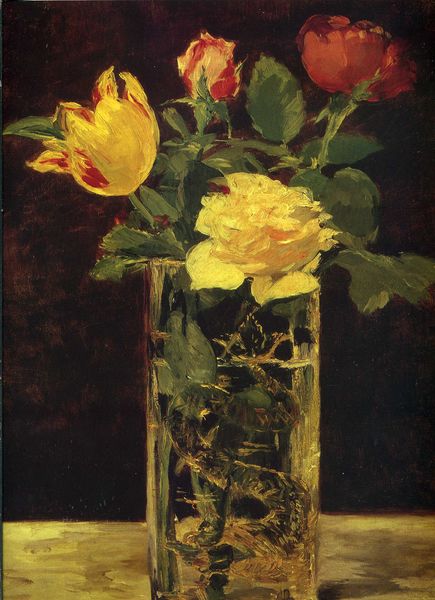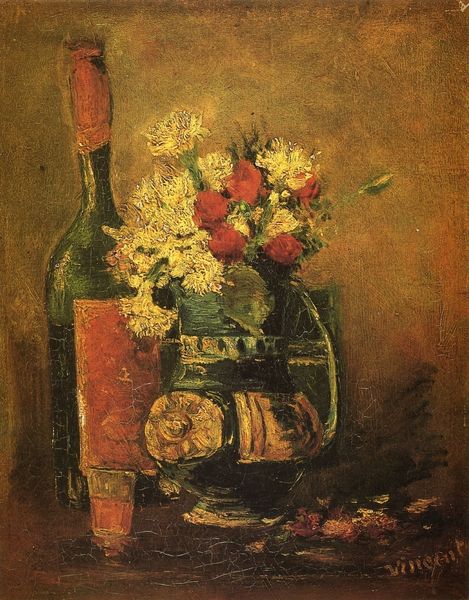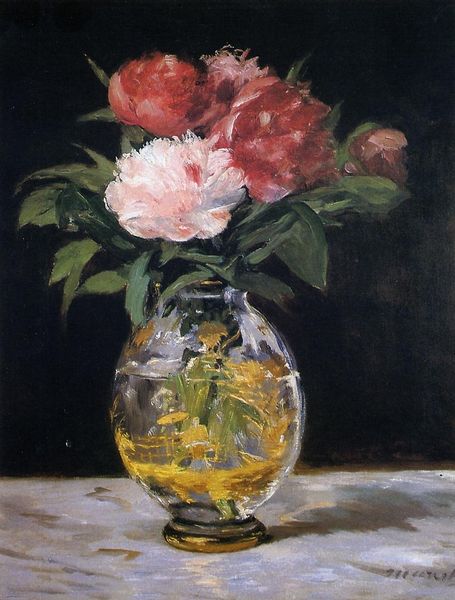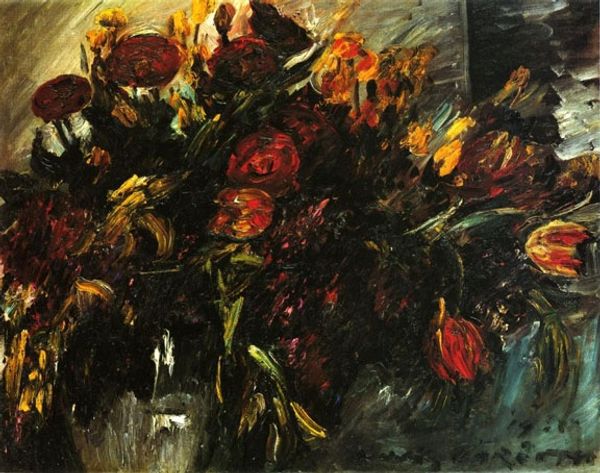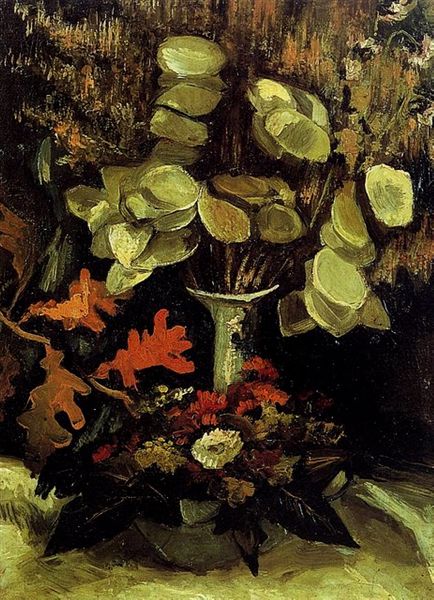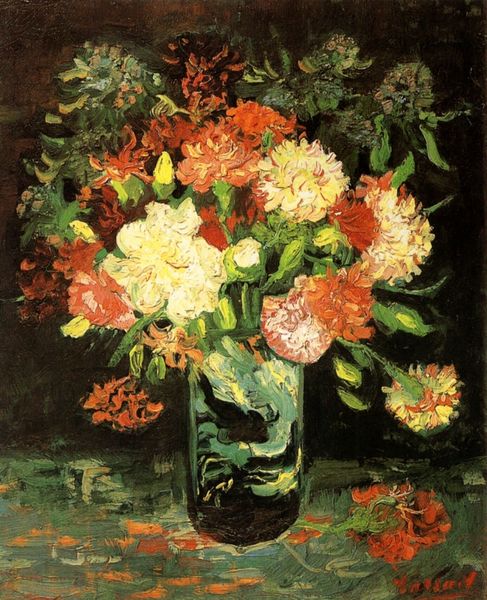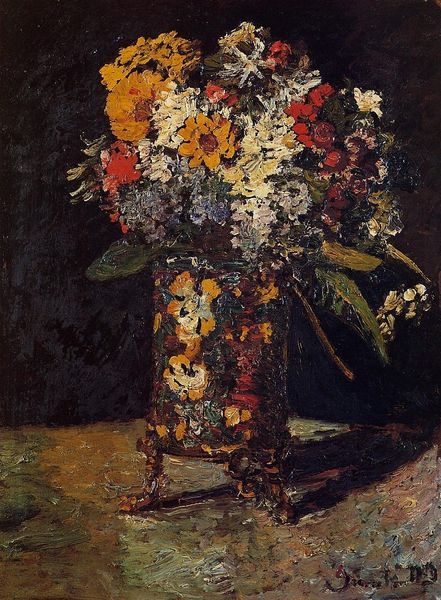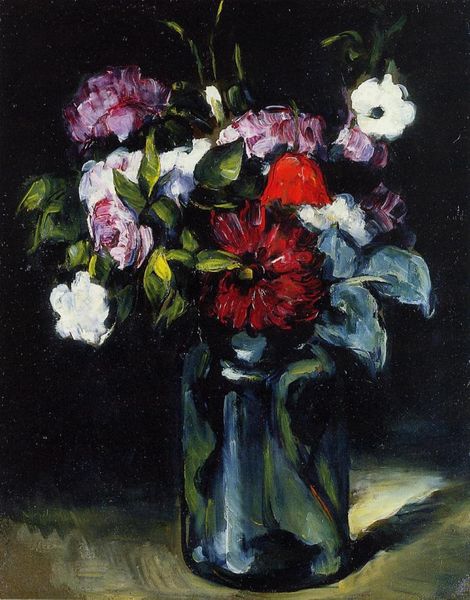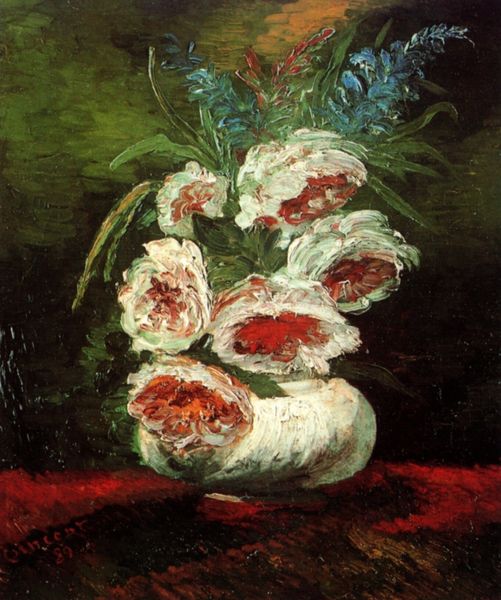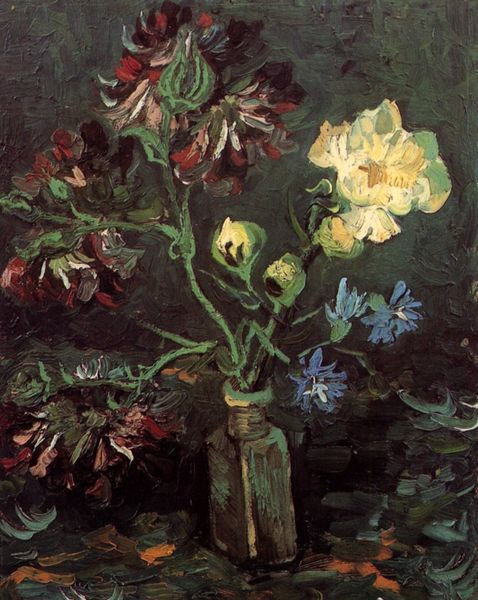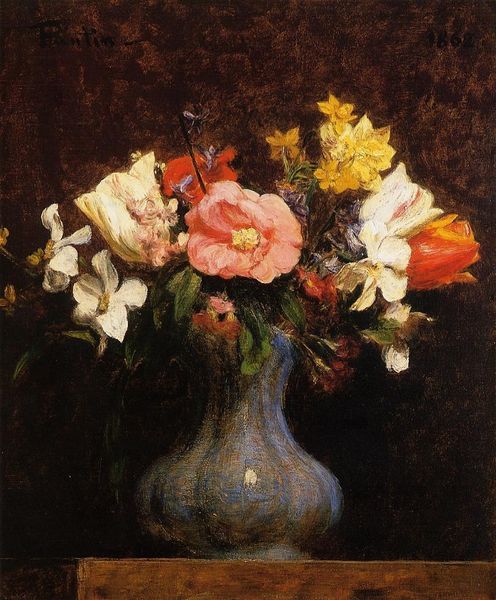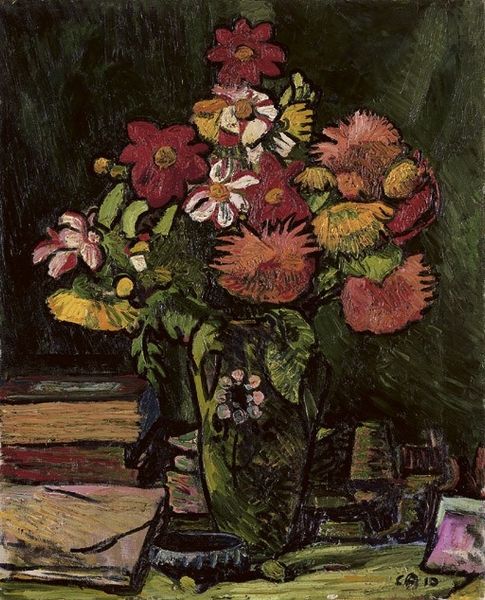
painting, oil-paint, photography, impasto
#
still-life
#
painting
#
impressionist painting style
#
oil-paint
#
flower
#
photography
#
oil painting
#
impasto
#
plant
#
post-impressionism
Copyright: Public domain
Curator: Standing before us is Vincent van Gogh's "Glass with Roses," an oil on canvas created in 1886 and currently housed in the Van Gogh Museum here in Amsterdam. Editor: Immediately, it's hitting me with a somber intensity. The roses, particularly, have this weighted, almost melancholic beauty about them, like they're holding onto summer before everything fades. It feels heavy, doesn’t it? Curator: Indeed. What's striking from a historical perspective is Van Gogh’s shift during his Paris period, a departure from the darker tones of his earlier Dutch works toward a lighter palette. Though here, he hasn't quite abandoned that earlier moodiness. Editor: No, there’s a real tug-of-war happening! Look at the impasto, how thick the paint is, practically sculptural in parts, especially around the blooms. It gives them such a visceral presence. Is it about mortality do you think, with all that density? Curator: Well, still lifes in art history have traditionally symbolized transience, and roses, of course, have multifaceted meanings from love and beauty to, yes, brevity. His engagement with Impressionism certainly influenced his brushwork and light, but he’s clearly using these elements to explore something deeper. There's a loneliness there, wouldn't you say? The piece feels isolated in its drama, removed from a broader social context, especially contrasted with the more popular paintings of Parisian cafe society, for instance, produced at the time. Editor: Absolutely. I can feel the isolation practically radiating off the canvas! And the color choices… that muted ochre of the roses, the dark background. It's almost like he's wrestling beauty out of the shadows, insisting on finding life even when surrounded by darkness. Curator: It speaks to Van Gogh’s relentless pursuit of expressive truth. Even within the confines of the still life genre, he manages to convey such emotional depth, really breaking new ground in subject representation. The flowers become almost a psychological self-portrait. Editor: Hmm, well put. I stepped closer, and you’re right, you see his search. For me, this painting resonates so profoundly because of its honest embrace of life’s complex emotions – the joy, the sadness, the fleeting nature of everything beautiful. Curator: A fascinating distillation of an artist's emotional landscape rendered on a humble, domestic scale. Thank you for adding that.
Comments
No comments
Be the first to comment and join the conversation on the ultimate creative platform.
